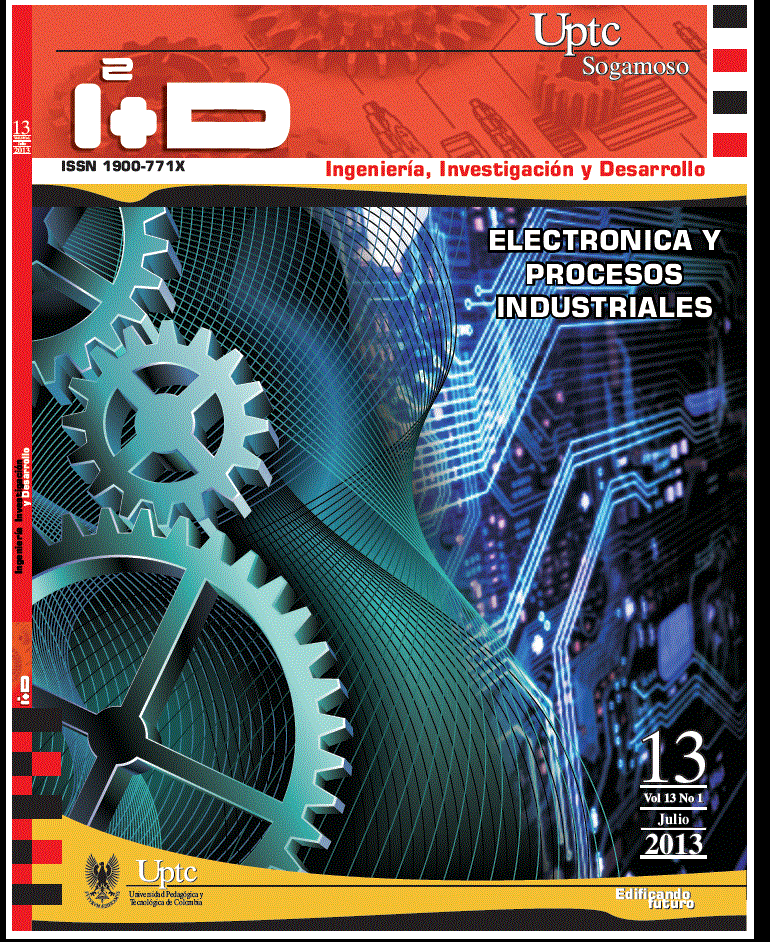Propuesta de automatización de un proceso de producción de inóculo de levadura a escala industrial para producción de etanol

Resumen
Este artículo presenta los resultados de una investigación aplicada, orientada a automatizar la etapa de reproducción de inóculo de levadura Saccaharomyces Cerevisiae en el proceso de producción de etanol. Con base en el análisis del funcionamiento y operación del proceso a escala industrial, se identifican las variables que van a instrumentarse, los requerimientos de la instrumentación y se propone un esquema de control para el proceso.
Palabras clave
fermentación aerobia, instrumentación, control
Citas
- Acevedo, S., Llano, F., Ochoa, J., Parra, J., Calero, L., Caballero, M., Figueroa, M., Marriaga, N. & Vallejo, R., (2005). Producción de alcohol carburante – Praj. Cenicaña.
- Cenicaña. Alford, J. S. (2006, Sep.). Bioprocess control: Advances and challenges. Computers & Chemical Engineering, 30(10-12), 1464-1475.
- Ashoori, A. Ghods, H. & Khaki-sedigh, A. (Dec. 2008). Model Predictive Control of a Nonlinear Fed- Batch Fermentation Process. Control, Automation, Robotics and Vision, 2008. ICARCV 2008. 10th International Conference, p. 17-20.
- Atsushi, V. & Aoyama, V. (1995, Dec.). Internal Model Control Framework Using Neural Networks. Engineering Applications of Artificial Intelligence, 8 (6), 689–70.
- Becker, T., Hitzmann, B., Ralf, K. M., Reardon, K. F., Stah,F. l, & Ulber, R. (2007). Future Aspects of Bioprocess Monitoring. Adv iochem Engin/Biotechnol, 249-293.
- Dochain D. & Bastin, G. (1990). On-line estimation and adaptive control of bioreactors. USA: Elsevier Science
- Dovzan, D. & Skrjanc, I. (2010). Predictive functional control based on an adaptive fuzzy model of a hybrid semi-batch reactor. Control Engineering Practice, 18, 979-989.
- Echeverry, M. R., Álvarez, H. & Quintero, O. (2003).Control de un biorreactor para fermentación alcohólica en continuo. Bogotá: Universidad Nacional de Colombia.
- Harms, P., Kostov, Y. & Rao, G. (2002). Bioprocess monitoring. Current Opinion in Biotechnology, 124127.
- Hernández, C., Escobar, A. & Galvis, J. (2003, marzo).Control difuso adaptativo aplicados a procesos de fermentación. Rev. Fac. Ing. Univ. Antioquia. (58), 105-113.
- Jiang, J., Fan, S., Kong, B., Cai, H., Guo, M. & Zhuo, V. (2009). Bioprocess Automation Using New Online Sensors. Yeast, 910-914.
- Lam, H. & Kostov, Y. (2010). Optical Instrumentation for Bioprocess Monitoring. Optical Sensor Systems in Biotechnology Advances in Biochemical Engineering /Biotechnology. 116, 125-142.
- Lederberg, J. & Schaechter, M. (2004). The Desk Encyclopedia of Microbiology. San Diego, CA: Academic Press.
- Mantovaneli, I. C. C. & Filho, R. M. (1992). Hybrid Neural Network Model For Alcoholic. Chemical Engineering, 1-10.
- Meleiro, L., Von Zuben, F. J. & Filho, R. M. (2009). Constructive learning neural network applied to identification and control of a fuel-ethanol fermentation process. Engineering Applications of Artificial Intelligence, 22( 2), 201-215.
- Merchuk, J. C. (1988). Microbiología Industrial. Organización de los Estados Americanos.
- Quintero, O., Amicarelli, A. & Scaglia, G. (2009). Control based on numerical methods and recursive bayesian estimation in a continuous alcoholic fermentation process. Bioresources. 4, 1372-1395.
- Thatipamala, S. R. R. & Hill, G.A. (1993). On-line State and Parameter Estimation and Adaptive Optimization of a Continuous Bioreactor (Ethanol Fermentation ) Using State Equations. American Control Conference. 905909.
Descargas
Los datos de descargas todavía no están disponibles.